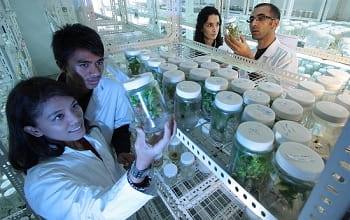Food for our Future
By 2050 the U.N. predicts there will be over 2 billion more people on earth (or 8.8 billion in all.) How will we produce enough food for that many more people?
A lot of people have been working on answers. Here are a few of them.
Digital trends and National Geographic both have a series of detailed, well-researched articles about some of the solutions scientists and others have been working on. The articles are fascinating but long.
After reading a number of them, I felt the place to start (or the best article to read if you just have time for one) would be Digital trends’ Future of Food Introduction. (If you’d like more, here’s the index to other articles on floating farms, agribots, speed breeding, ‘hamburgers‘ from crickets, vertical farming, and more.
National Geographic’s series is here.)
My personal favorite selection on future foods was this thought-provoking TED talk on applying space-travel research to food production on earth. Lisa's company is using special microbes to recycle carbon dioxide into tasty foods. The process potentially can reduce global warming. It also can produce a substitute for palm oil—possibly saving some of the remaining tropical rainforests.
She points out that conventional modern agriculture is just not able to produce enough food to meet future needs—but these microbial products could help make up the difference. They grow faster, they grow in the dark so they can be grown almost anywhere, and they take up a lot less space than traditional
farming. (She also points out that these foods aren’t weird. We already enjoy many foods made using microbes: yogurt, cheese, beer, and even bread.)
This NPR blog post discusses a Washington State project to develop a perennial form of wheat. (It explains the advantages of perennials, including reduced labor and less soil erosion, since farmers don’t need to plant and cultivate a new crop every year.) It has been difficult to get a stable perennial variety that breeds true from one generation to the next, but they finally have one. Now they are concentrating on improving it.
Finally, I’m including a short news article that isn’t really about the future, but about providing a
Thanksgiving dinner now for all the people driven from their homes by the Camp Fire in northern California. I know that area, so I was glad to hear a little good news coming out of a terrible situation.

Vocabulary Practice: Future Agriculture
You can practice this week’s vocabulary with a future agriculture crossword. The answers are here.
I did want to explain the way ‘scale’ is used in the TED talk, since it’s not the most common meaning of ‘scale.’ It’s a verb there, and it means to increase production as much as necessary to meet future demands. (If you look ‘scale’ up in most dictionaries, this won’t be one of the first definitions, even as a verb. It’s not a rare word, though. Businesses sometimes talk about the need to ‘scale up’ production to reach a bigger audience, or to ‘scale down’ (reduce production as much as necessary to reduce costs.)
Warmly,
Catherine Simonton, EnglishHints.com
P.S. If you don’t like to open links in emails, you can go to the EnglishHinks Back Issues page and open them there. It’s https://www.englishhints.com/English_Detective-backissues.html
A note if you get gmail: Have you missed any issues of English Detective? if you find English Detective in your Promotions box, you can move it to your Primary box (if you want) by clicking on it and dragging it there, then clicking Yes when asked if you want to always get it in the Primary box.
If you are not already getting English Detective, you can subscribe by completing the form
here. (It's free!)
Also, you can reach me by mail at 1752 Driftwood Drive, El Centro, CA 92243, USA.
|

